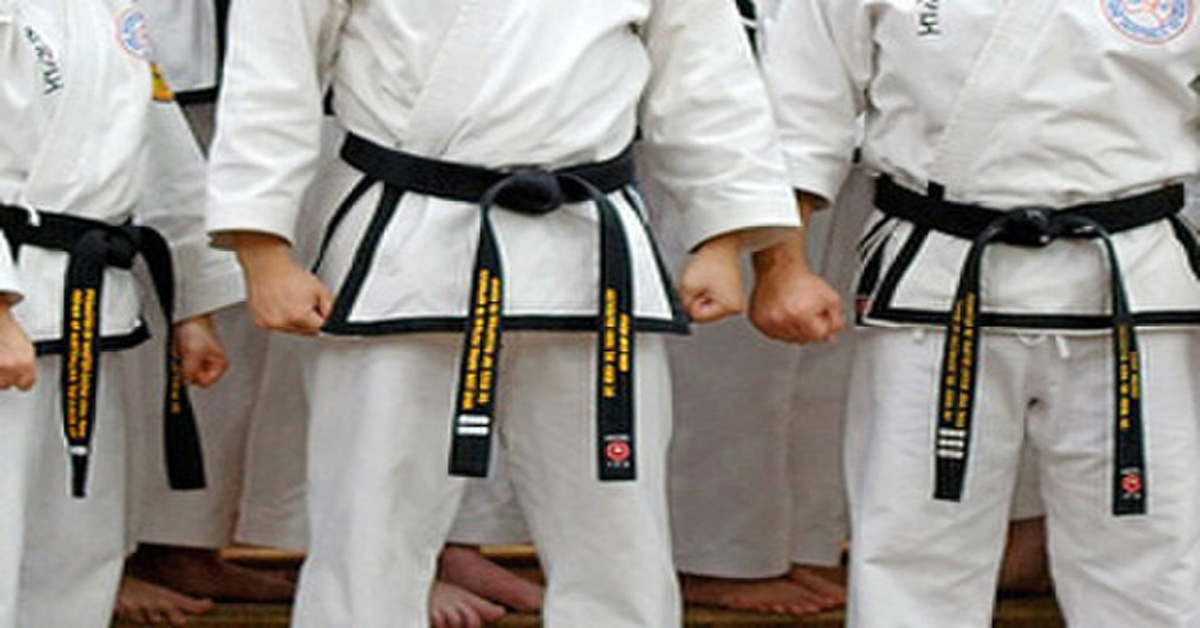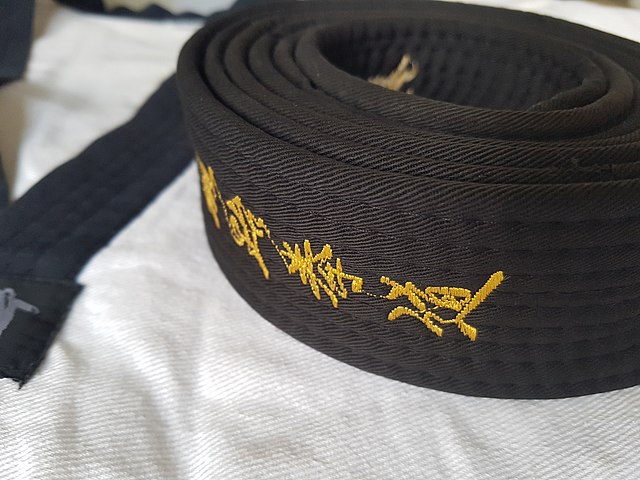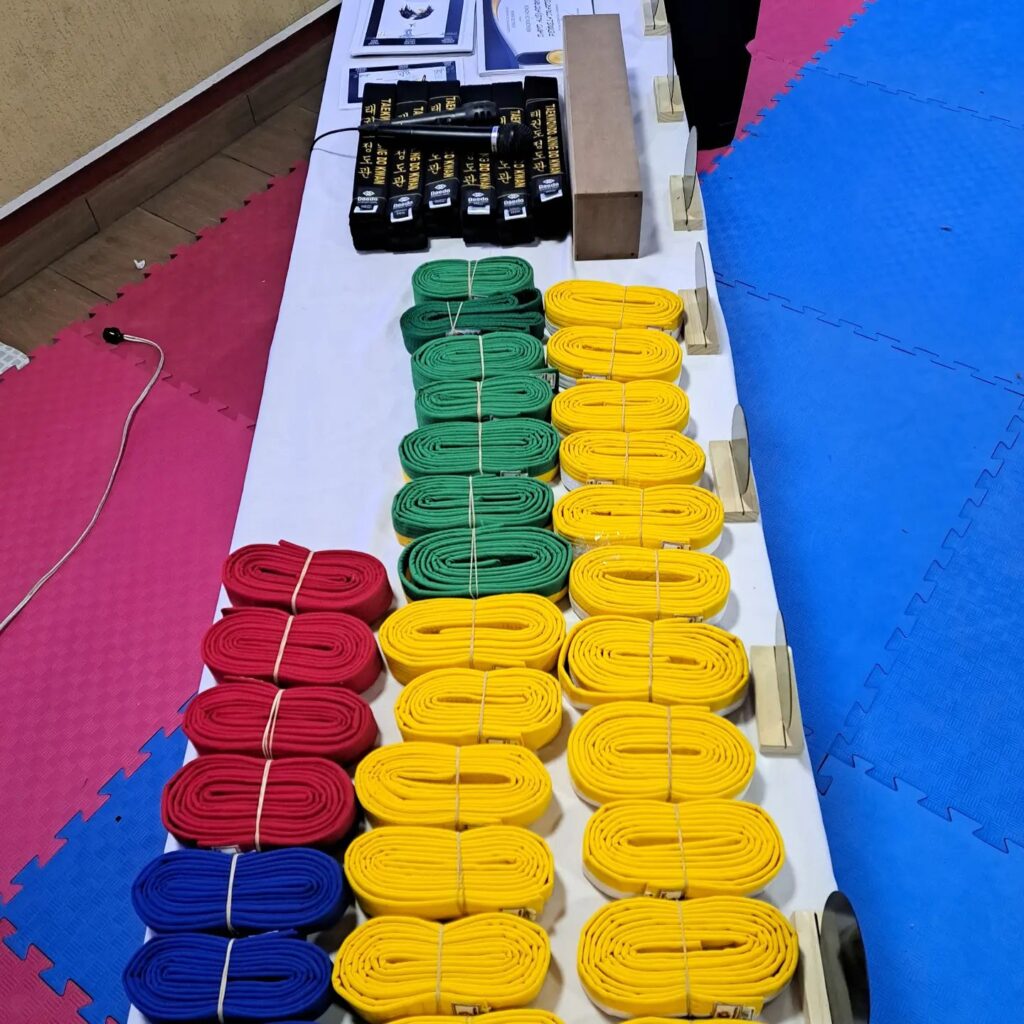Taekwondo Belts Ranking System: Explained

Taekwondo is one of the most practiced martial arts in the world. A common question asked by potential students is about the Taekwondo belts.
Let’s go over all you need to know about the Taekwondo belts. Read below to learn about all of the Taekwondo ranks and what significance each rank holds.
The History of Taekwondo Belts
To give you a little backstory, let’s talk about the history of Taekwondo belts. When the Japanese occupation of Korea ended after WWII, Korean martial arts practitioners began teaching publicly.
The practitioners of different practitioners from the five Korean kwans(schools) began coming up with Taekwondo. When they came up with the framework of Taekwondo, they borrowed many aspects of Japanese martial arts.
Particularly borrowing from Karate and Judo, which used a belt ranking system to separate the skill level of students. Official Taekwondo belts were never agreed upon as different organizations began to form.
Those early Taekwondo organizations would develop their own ranking systems, which are still used today.

The Different Ranking Systems of Taekwondo Belts
Various different Taekwondo organizations use their own system of Taekwondo belts. To give you an example, we included the ranking systems of the world’s biggest Taekwondo organizations. World Taekwondo(WT) and the International Taekwondo Federations (ITF).
World Taekwondo (WT)
World Taekwondo has a total of 12 ranks within its system of Taekwondo belts.
- White Belt
- Yellow Belt
- Orange Belt
- Green Belt
- Purple Belt
- Blue Belt
- Sr. Blue Belt
- Brown Belt
- Sr. Brown Belt
- Jr. Black Belt
- Black Belt
International Taekwondo Federation (ITF)
The International Taekwondo Federation (ITF) is the second biggest Taekwondo organization in the world, next to WT. The ranking system of the Taekwondo belt in the ITF is different than the WT ranking system.
The ITF system of Taekwondo belts includes 9 belts compared to WT’s 12 belts.
- White Belt
- White Belt w/ Yellow Stripe
- Yellow Belt
- Yellow Belt w/ Green Stripe
- Green Belt
- Green Belt w/ Blue Stripe
- Red Belt
- Red Belt w/ Black Stripe
- Black Strip w/ Yellow Stripe
Junior Levels vs. Senior Levels Within Taekwondo Belts
Taekwondo organizations created junior and senior-level ranks to prevent overlap between adult and senior students.
In order to reach the rank of black belt, junior students have to go through more belts than senior-level students. For example, the ranks that mix solid colors with colored stripes were extra ranks made for kids.
The reasons for additions of these types of ranks were created for two reasons. Separate the junior and adult students while prolonging a junior’s time to earn a black belt.
This was done so teens 12-15 weren’t awarded black belts, which would delegitimize the martial art.

How Long Does it Take to Complete the Taekwondo Belts?
On average, it takes around 4-5 years to go through the lower Taekwondo belts before earning a black belt. Here’s how it may look for a Taekwondo student to go through the Taekwondo belts of the ITF system
- White Belt: 2 Months
- White w/ Yellow Stripe: 2 Months
- Yellow Belt: 2 Months
- Yellow w/ Green Stripe: 2 Months
- Green Belt: 2 Months
- Green w/ Blue Stripe: 3 Months
- Blue Belt: 4-6 Months
- Blue w/ Red Stripe: 4-6 Months
- Red Belt: 4-6 Months
- Red w/ Black Stripe: 7-9 Months
- Black w/ Yellow Stripe: 1 Year
Total: 4-5 Years
This average time to go through the Taekwondo belts will depend on a student’s dedication to training and talent.
How do You Advance Through the Taekwondo Belts
To advance through the Taekwondo belts, a student must complete different facets of training and maintain good attendance.
Taekwondo students will do a mix of the following as they progress through the Taekwondo belt system.
- Techniques: Techniques go from basic to advanced as students develop their skills.
- Poomsaes(Forms): Students must perform different poomsaes or forms at each rank.
- Sparring: Sparring becomes a requirement as students advance through the ranks.
- Physical Fitness: In some belt tests, instructors require students to pass fitness tests before awarding a belt.
- Written Tests: Advanced students may have to pass written exams in order to be awarded higher ranks.
- Board/Brick Breaking?: Not all Taekwondo schools do this, but some require students to break boards or bricks during belt tests.
- Attendance: Students must keep an excellent attendance record in order to be considered for belt tests.

What is the Highest Rank of the Taekwondo Belts?
The highest rank of the Taekwondo belts is the 10th-degree red belt. Although it is nearly impossible for a normal person to attain.
World Taekwondo has only awarded 6 10th dan Grand Masters in the organization’s history. This number is followed by around 50 practitioners, who reached the 9th dan rank.
Within the ITF, the organization has around 40 9th dan practitioners and never awarded a 10th dan to anyone.
Taekwondo Belts vs. Karate Belts
People often get the Taekwondo belts confused with the Karate belts. While people confuse the two styles, they do have a different number of belts and colors within each system.
The Karate Belt Systems
- White Belt
- Yellow Belt
- Orange Belt
- Green Belt
- Blue Belt
- Purple Belt
- Red Belt
- Brown Belt
- Black Belt
As you can see, the Karate belts are different than the Taekwondo belts. However, it takes students of both disciplines an average time to earn a black belt in each style.






